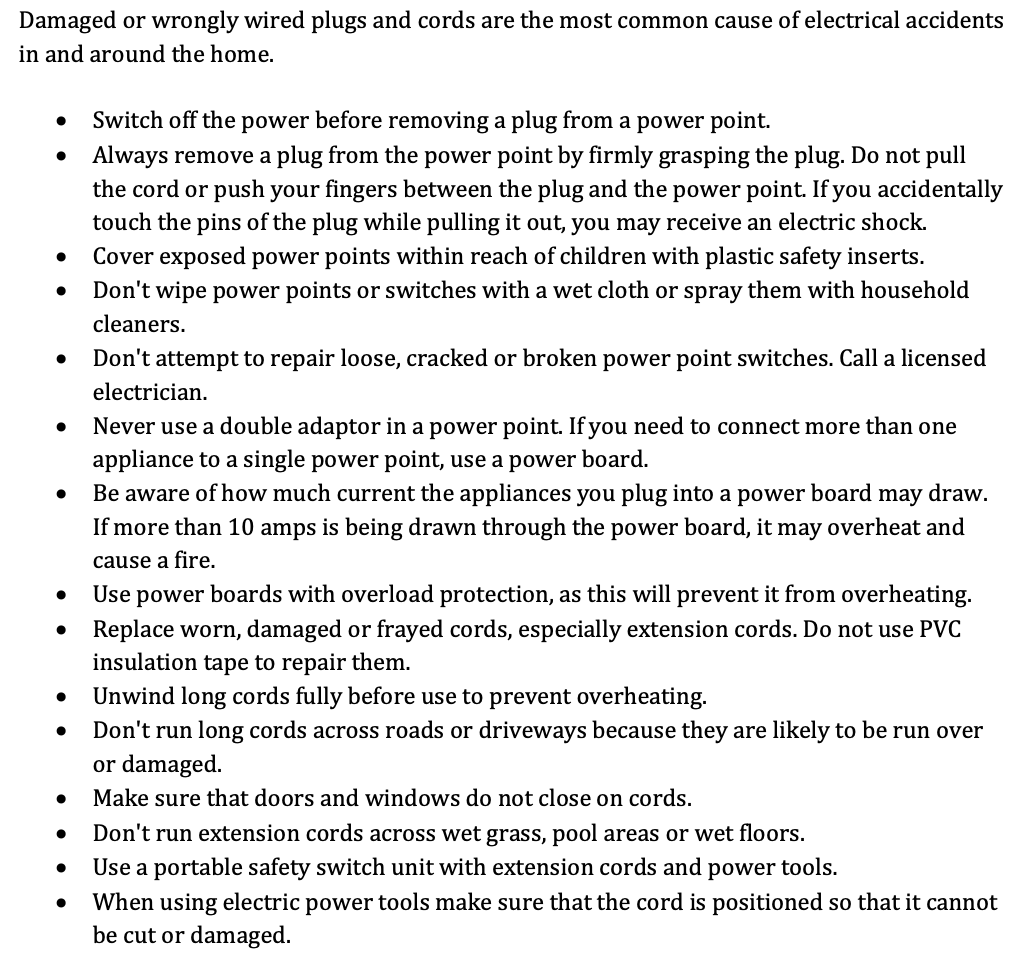Electrical Forces and Energy
1/57
Earn XP
Description and Tags
Topic 5
Name | Mastery | Learn | Test | Matching | Spaced |
|---|
No study sessions yet.
58 Terms
Atoms
Electrons (negative), Protons (+) P+E equal in magnitude, Neutrons (0)
S.I unit of electric charge = the coulomb (C)
Charge on one proton = 1.60 × 10^-19C
Charge on one neutron =-1.6 × 19^019 C
Neutron Atom
has equal numbers of electrons and protons ∴charge = 0
Electrostatic Charge
Outer electrons may be added or removed, e.g; by rubbing, leaving the atom charged
Basic Law of Electrostatics
Like charges repel
Unlike charges attract
Conductor + insulator
a conductor: an object that readily allows electron charge to flow through it or over it surface
an insulator: an object that does not allow charge to flow through it or over its surface
Voltage
If the positive terminal of a battery (a device that separates charge chemically) is connected to the negative terminal by a wire conductor, electrons will flow from -ve to +ve terminal
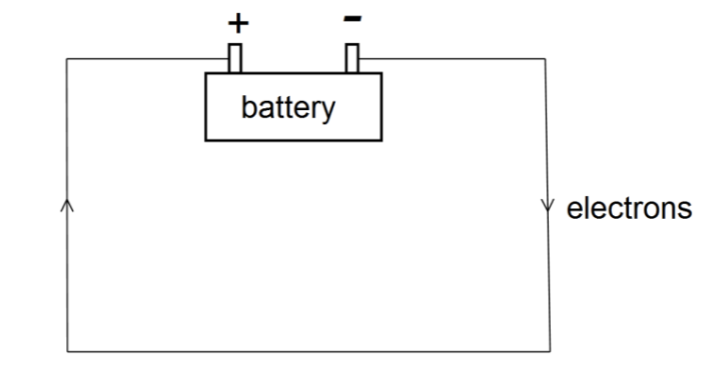
Current
it is a convention to say that current flows from +ve to -ve (the other way)
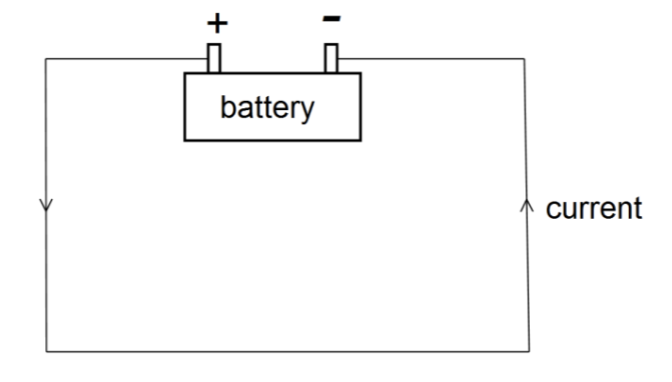
Voltage
The voltage (EMF) of a battery is the energy in J supplied to each coulomb of charge passing round the circuit and through the battery (i.e. the work one in moving 1C round the circuit)
V=w(energy)/q (charge)
The voltage of a battery may be measured by a voltmeter, connected in parallel. We say that the separation of charge in the battery sets up an electric potential or PD across the circuit - which drives the current
Electric Current
The rate of flow of electric charge (usually electrons in a circuit)
I = q/t
Current is conserved at all points in a circuit, i.e. no current is lost or gained
Current may be measured by an ammeter, connected in series
sometimes we use non-SI unit: Amp-hour (Ah)
Direct Current
always flows in one direction (as in a battery-powered circuit)
Alternating current
keeps alternating directions (about 50 times each second) as the voltage changes polarity (the domestic mains supply is AC)
Conductivity
Metals are typically better conductors than non-metals
Rainwater is a good conductor because it contains dissolved salts that allow the passage of electrons, but distilled water is a poor conductor
Electrical Energy and Power
W=qV → the amount of work done (energy used) by a voltage V moving charge q through an electric field (through the circuit)
Most of the energy gained by the electrons as they move through the battery is given up as they pass through the various components of the circuit, but a little is given up as heat as the electrons pass through the circuit wires
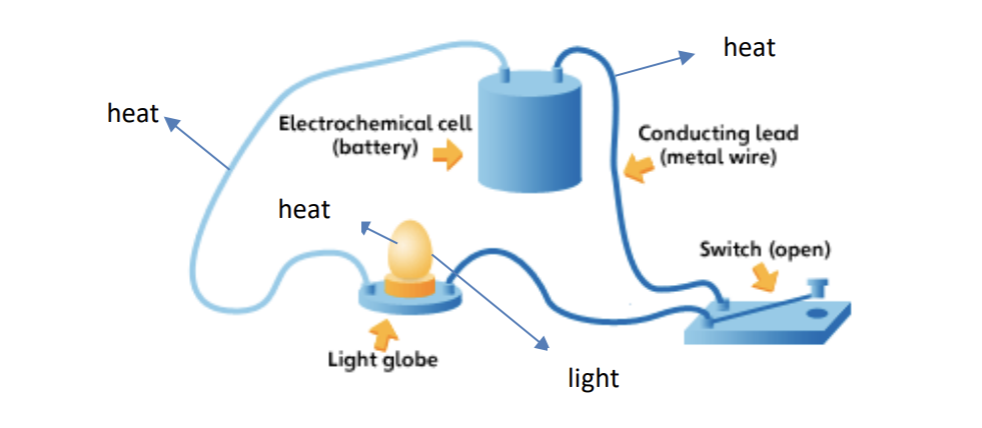
Electrical circuits
enable electrical energy to be transferred and transformed into a range of other useful forms of energy, including thermal and kinetic energy and light. Heat in the wires is not useful energy
**Energy is conserved in the energy transfers that occur in an electrical circuit
Electrical circu
If the EMF of the battery is 12V, then each coulomb of charge will pick up 12J of energy in the battery and lose it all in the circuit (mostly in the light globe)
This gives the rate at which the circuit uses up energy = rate at which the battery gives energy to the electrons
The commercial unit of electrical energy = kWh (a unit)
Electric Shock
The energy imparted to the body when electric current passes through it is what does the damage
even a small current, if flowing long enough, can be dangerous
E=IVt
Fibrillation
Exposure to electric shock can cause fibrillation: a rapid and uncontrolled beating of the heart that can starve the brain of oxygen, causing brain damage or death.
The current that flows trough the body depends on:
the voltage, the path taken through the body (most dangerous = across chest), the skin resistance (lower resistance and greater current = higher danger)(lower when wet)
Three Wires
two for incoming and outgoing current (active and neutral wires)
earth = takes away any excess charge that may build up as a result of any malfunctioning electrical component
potential of earth = 0 V
International colour code: A = brown, N= blue, E = green and yellow stripes
Fuses
fuse = a piece of thin wire designed to melt if the current gets too great, thereby breaking the circuit and preventing the danger of fire
Circuit-Breakers
Electromagnetic switch that automatically turns off the current when it gets too high. This protects against household fires caused by unusually high currents, but does not prevent electrocution (the current does not need to be high to electrocute someone)
RCD’s
Residual Current (Circuit) Device
a device that disconnects a circuit whenever it detects that the electric current is not balanced between active and neutral wires
balance = current leakage through the body of a person who is grounded and accidentally touching the energised part of the circuit (a lethal shock can occur)
designed to disconnect quickly enough to prevent injury caused by shocks.
Modern buildings have both circuit breakers and RCDs
Earthing
Metal parts in a mains appliance are connected to the earth wire so that if the metal becomes alive due to a fault, current will flow to the ground rather than through the user (thick, carries large current)
Double insulation
two separate layers between live parts and any external metal, both of which would have to be bypassed in order to create a hazard (inner layer = surrounds live parts, second layer only layer exposed to the user)
EMF (DC single cell)
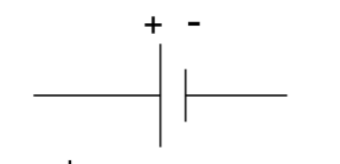
EMF (battery of cells)
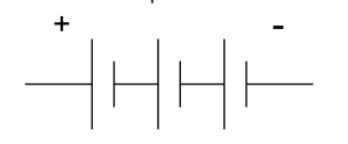
EMF (AC Supply)

resistor

variable resistor

light globe

earth
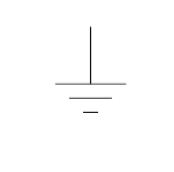
switch
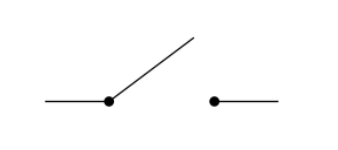
fuse
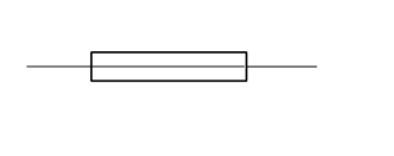
ammeter

voltmeter
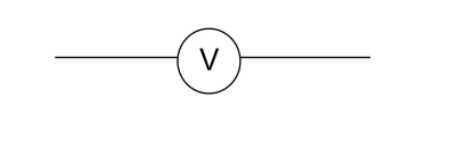
Ohm’s Law
All substances resist the flow of electrons to some extent
Unit of resistance = Ohm
For a given conductor under constant conditions (E.g. temperature), the current through it is proportional to the potential difference between its ends
V∝I
Constant of proportionality is resistance
V=IR
Resistivity
the degree to which a substance resists electric current
The resistivity of a material actually increases when it is heated, but we usually regard it as a constant
Resistor
an object that may be placed in a circuit to resist the current
Resistance
The property of a resistor by virtue of which it resists the flow of current through it (converting electrical energy into heat); i.e. “resistance” is the strength of the ‘resistor’
Formula Resistance
Depends on the nature and dimensions of the resistor.
Length (L), cross sectional area (A), resistivity (p) has resistance given by
R=pl/A
The current in a circuit depends on the PD (V) provided by the battery and the total resistance (R) in the circuit
Ohmic conductor
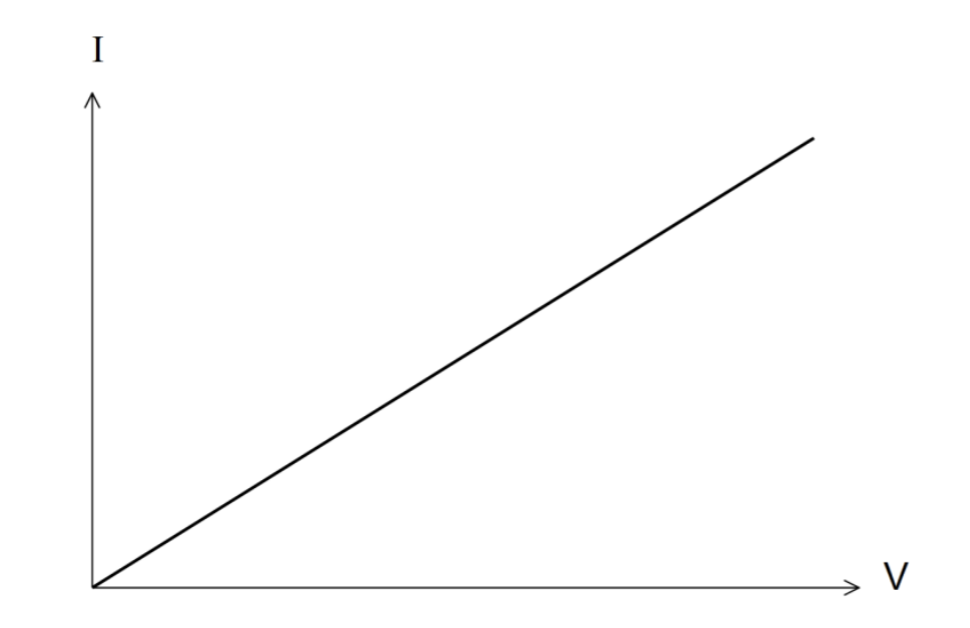
Non-ohmic conductor
In practice, resistance increases as the circuit heats up, so the graph is curved
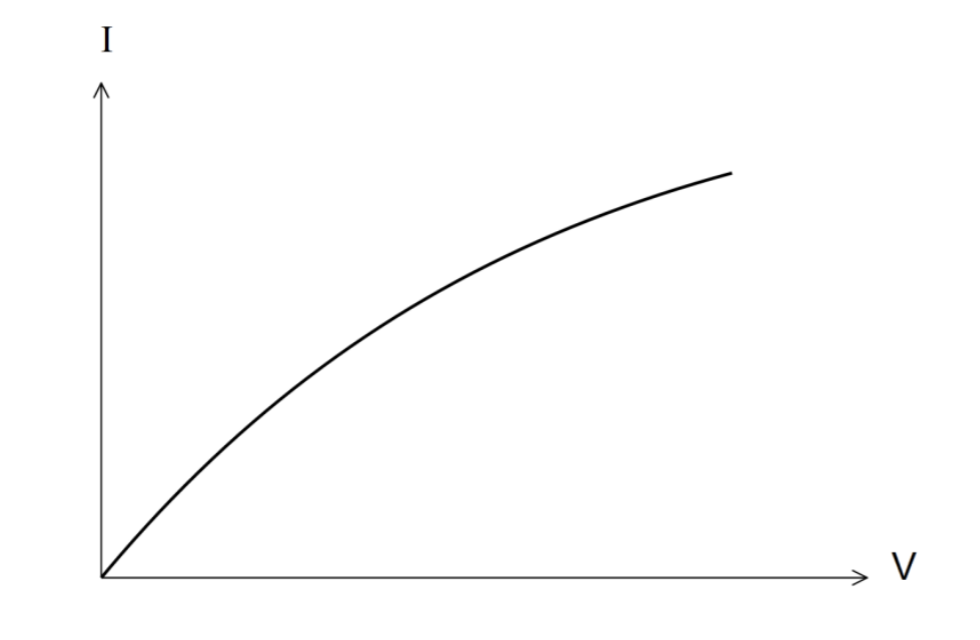
E.g. light globe - its resistivity increases as it heats up, so higher voltages do not produce proportionally higher current
Non-ohmic property
the principle behind light detection devices (substances whose resitivity is affected by light) and modern thermostats (affected by heat)
Conversely when some metals and ceramics are cooled sufficiently, their resistivity drops to almost zero and they become superconductors. The main application of superconductivity has been the production of very strong magnets (easily sustained electric currents produce a magnetic field)
V=IR in ohmic and non-ohmic
the only difference is that, for latter value of R is not constant (R increases as the conductor heats up).
Series Circuits
All the current flows through each resistor
EMF does not work to move the charge through each successive resistor - te total PD across the circuit equals the sum of the potential drops across the resistors in the circuit
Resistance in the circuit is found by simply adding the separate resistances
**connecting wires also have a slight resistance (ignored)
PD across each resistor work done per charge to go through the resistor) cna be found using V=IR
Parallel Circuits
When resistors are connected in parallel, the potential difference is the same across each resistor, but only some of the current passes through a given resistor.
Parallel Circuit Formulas
It = I1 + I2 + I3 + …. (Parallel)
1/Rt = 1/R1 + 1/R2 + 1/R3 + …
Current in each resistor can be found using I = V/R since V = same for each resistor
Series vs Parallel
When components are connected in series, a failure of one component breaks the circuit (no component breaks the circuit. Parallel: failure of one component has no effect on the others
Placing resistors in series reduces total current. Placing more resistors in parallel increases the total current.
The total power consumed by a circuit is found by ADDING power consumed by each component (S+P)
Series vs Parallel II
Charge is conserved at all points in an electrical circuit (i.e. the total charge entering and leaving any junction is always the same)
Energy is conserved in the energy transfers that occur in an electrical circuit. (e.g. total energy supplied by the EMF is equal to the sum of heat energy produced in the wires + various forms of energy activated in the load → Kinetic, heat, light, sound energy)
Circuits in the home
All main electrical circuits have following:
source of EMF
form of protection
switch
load (e.g. lights, TV, fan,) which converts electrical energy to another form
low-resistance cables joining the parts together
Circuits are made up of a combination of series and parallel connections
Circuits in the home II
The supply enters the house through the meter and then breaks into separate parallel circuits
for ‘power’ and lights. ‘Power’ outlets and light fittings are connected in parallel so that each
one works off the full 240 V. However, each of the two main circuits (‘power’ and lights) has
its own protection device (e.g. fuse or RCD) and switch in series so that the lights and ‘power’
outlets will fail to work if the switch is off or there is an unduly large current because of a
malfunction.
Electric Blankets
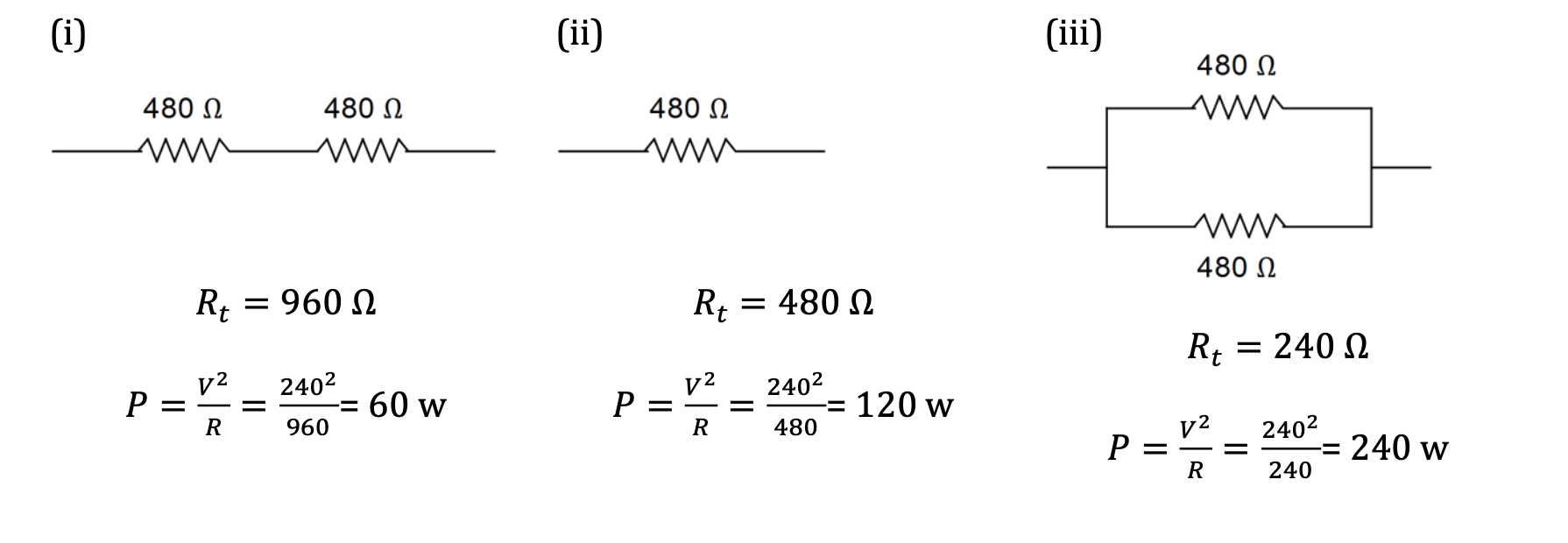
Lights switches
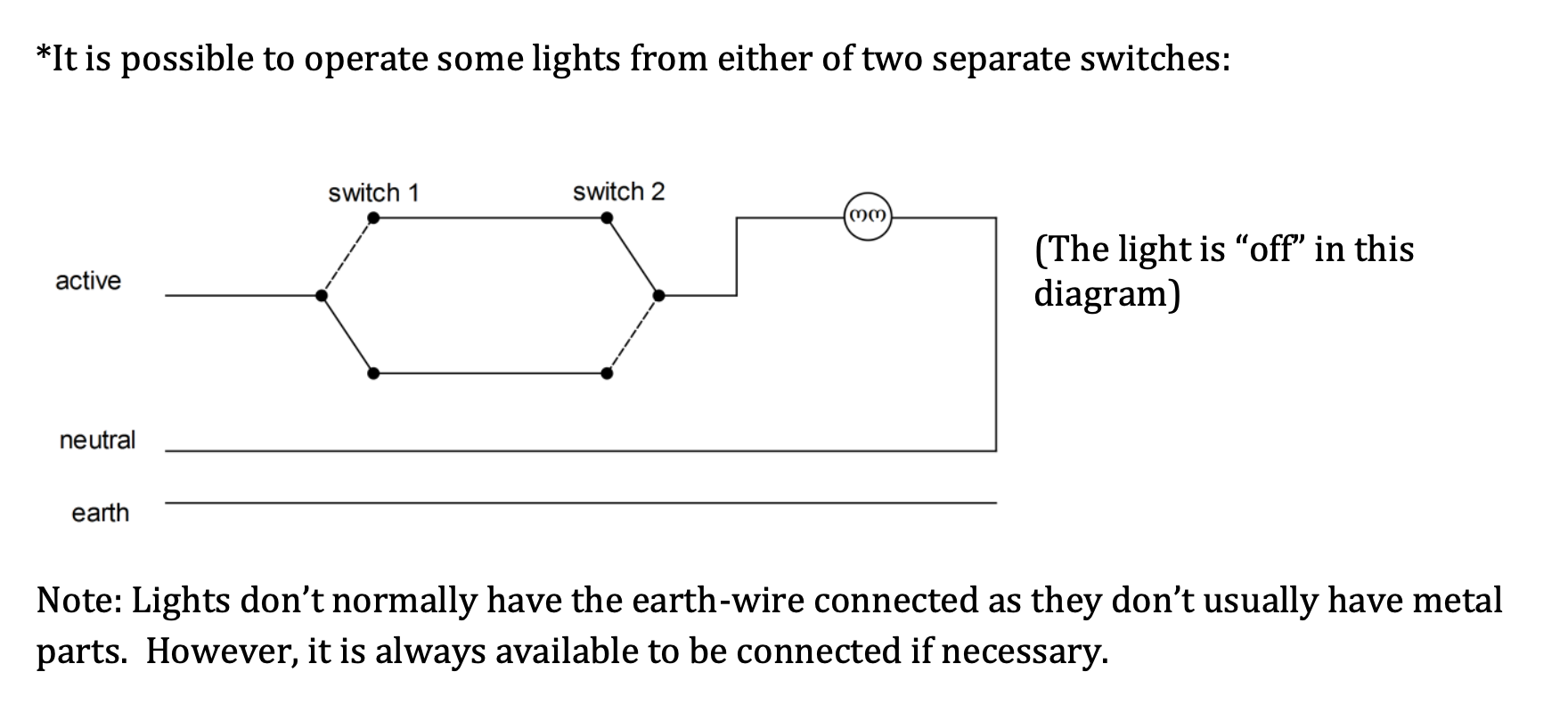
Electricity in remote areas
not always possible to obtain a 240V supply - electrical devices must be modified to draw a much larger current to compensate for lower voltage to keep power rating at required level (P=IV).
Resistance → important, current through them is larger, energy wasted is greater (P=I²R) → wires are kept short and thick.
Solar photovoltaic cells
convert heat energy from the Sun into electrical energy. Each cell produces up to 36 W of power (e.g. 3A current @ 12V). The modules connected in different ways for different requirements
AC voltage
varies from -340V to +340V as polarity changes direction. The value of 240V is a kind of average, indicating the equivalent DC supply that would provide the same energy.
Safety in the Home - General Precautions
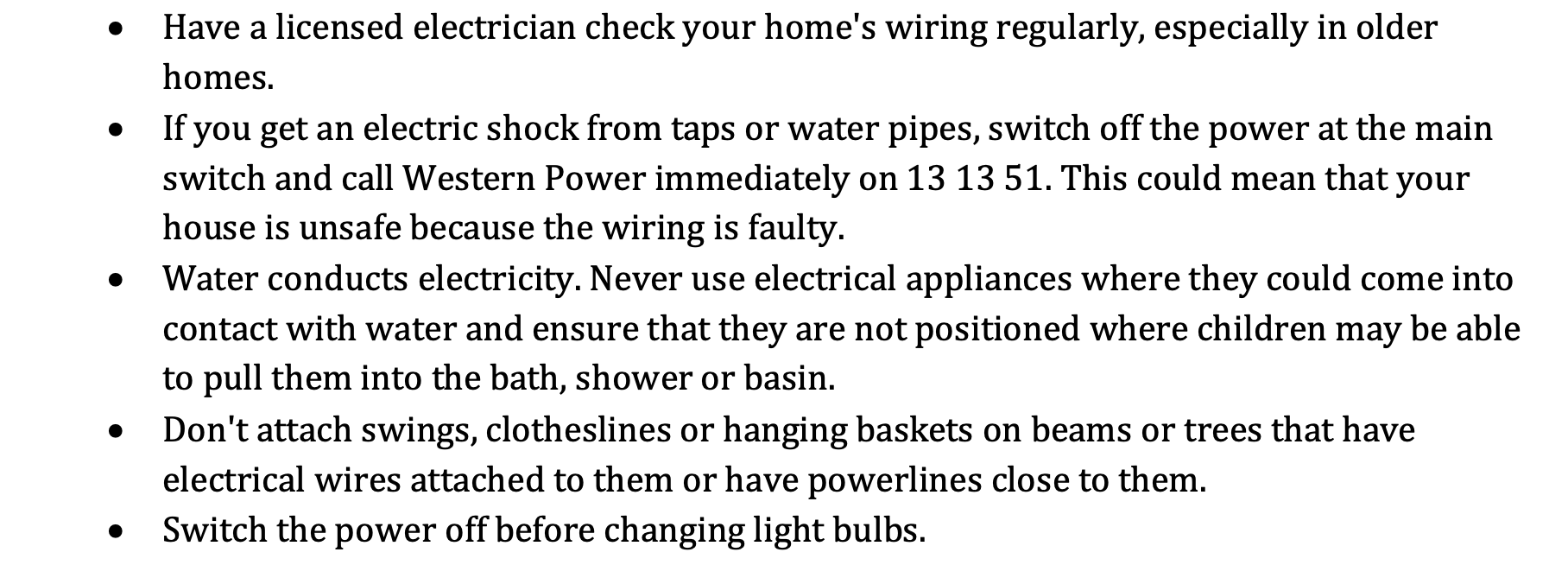
Appliances
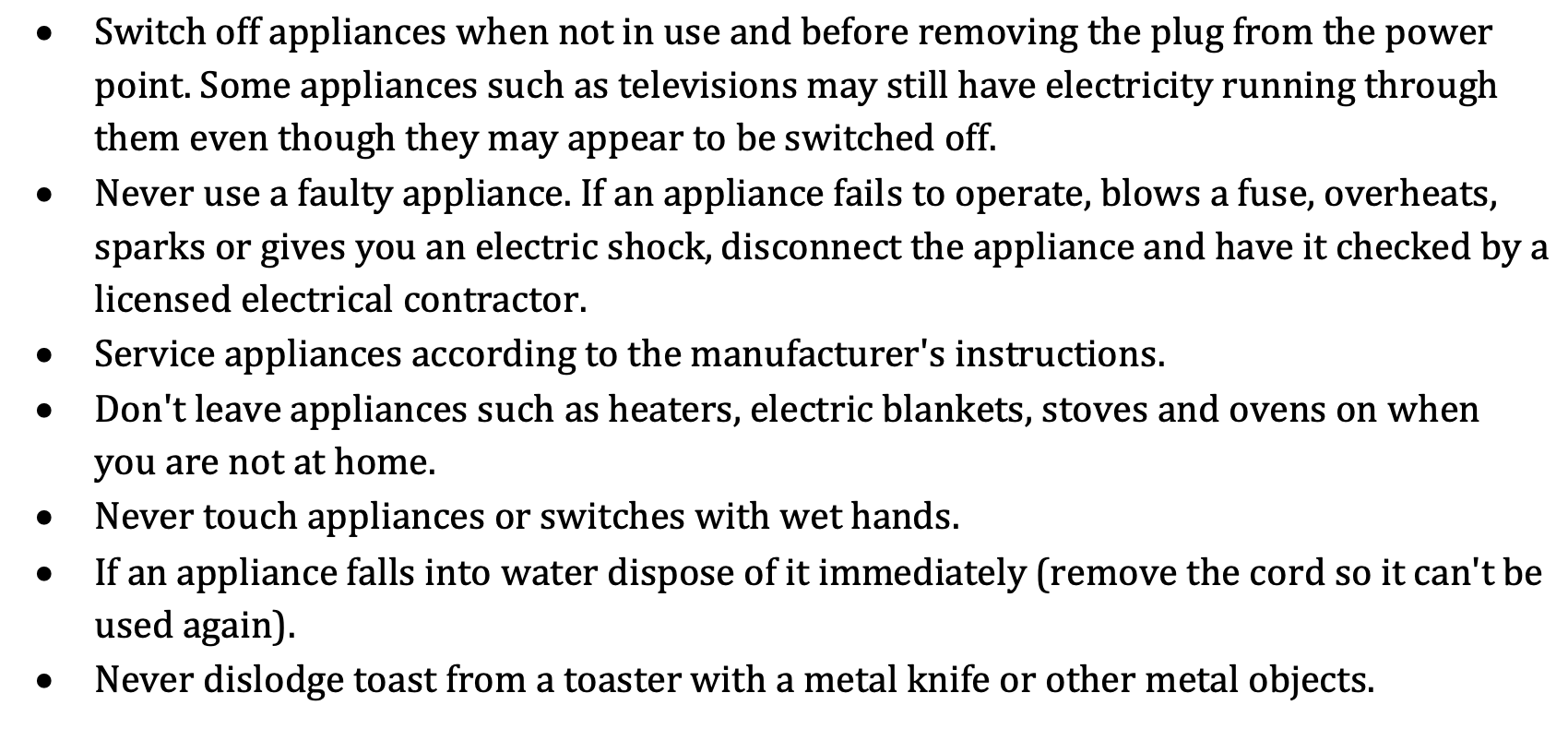
Power points, plugs and cords
